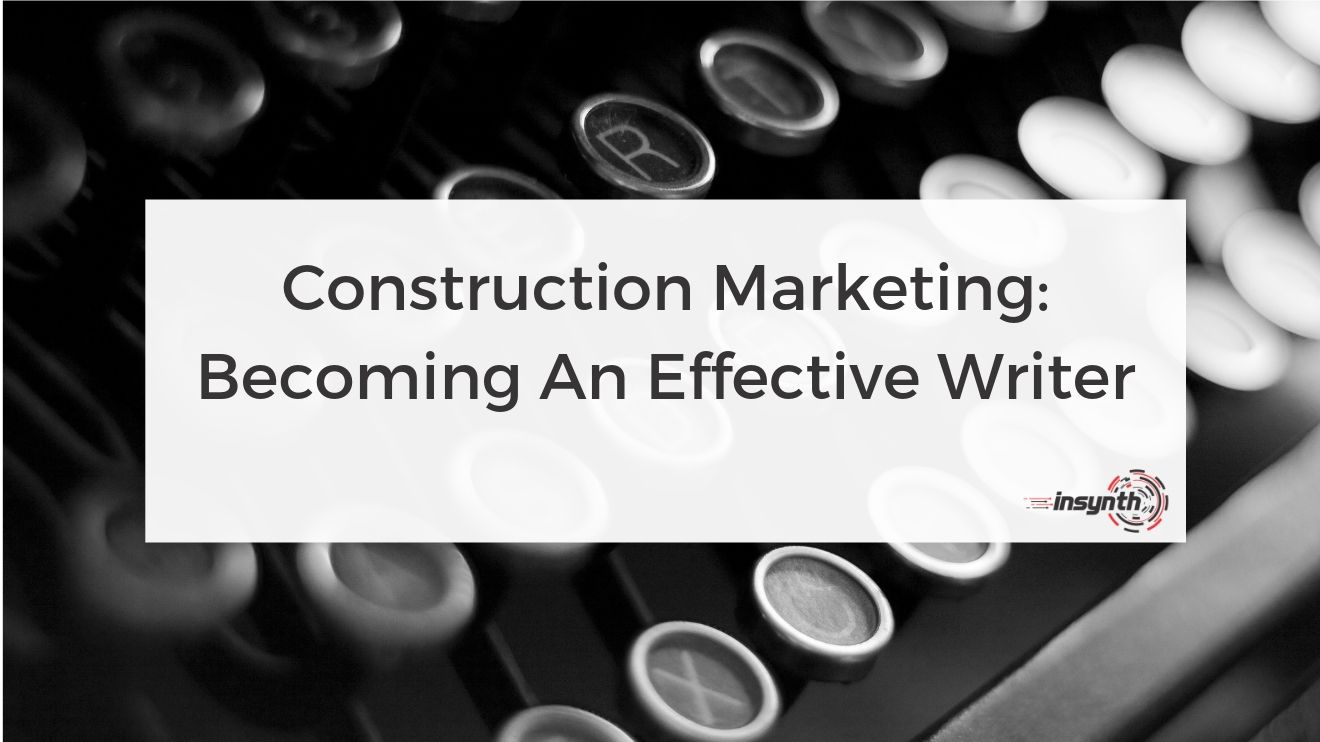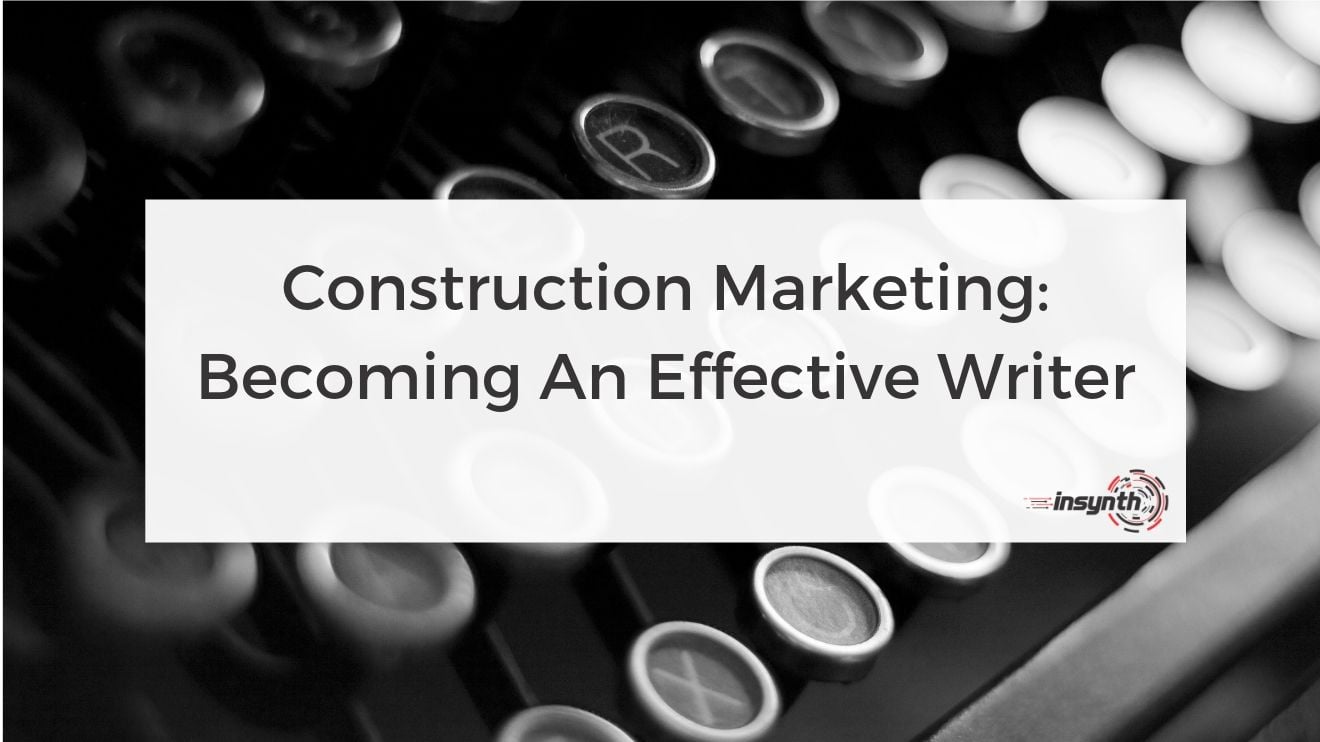

Why Does Effective Writing Matter?
Words are the currency of the web. The words that people see are what prompts a decision. An action. With that being said, your content is what will make or break a decision to buy into your brand.
As a content writer, your task is to use words in ways that will benefit your business and brand. In doing this, you will need to establish ways to connect with your reader, making them number one priority.
But, what if you’re not a content writer?
Perhaps you operate on a smaller scale and you have to wear many hats within your company.
Perhaps you’re unconfident about your writing ability.
Perhaps English isn’t your specialism.
It’s important to address these insecurities and consider ways in which you can move forward. Your insecurities shouldn’t get in the way of producing stand-out content.
Read on to find out how to become an effective writer for your building products company…
Headlines
Now you understand why it’s important to write effectively, we’ll look a little more closely into the core attributes of effective writing, starting with headlines.
An attention-grabbing headline. Did you know that 80% of people will read your headline whilst only 20% will read the entire article? With that in mind, careful consideration needs to be placed in deciding upon your headline.
That doesn’t mean that you have to decide upon a concrete headline straight away. Don’t let deliberating over a headline halt your creativity for writing the main body of the blog. Instead, give it a working headline and consider the best option once your blog has been written.
There are several headline formats that people tend to adopt when blog writing. We will explore these in detail below.
8 Headline Formats For Your Building Products Brand
The ‘How to’ Format. These blogs are the ones that tend to tell the reader how to do something. For example, ‘How To Clean Behind A Radiator’. The purpose here is to give the reader practical tips in order to achieve an end result.
The List Format. This usually follows the structure of ‘X Ways To Soundproof Your Room’, for example.
The Question Format. This usually piques the interest of a reader and promises to answer a question. For example, ‘What Are The Construction Industry’s Biggest Secrets?’
The Negative-Angle Format. This accuses the reader of failing to do something or doing something incorrectly. An example of this could be, ‘Why You Should Never…’
The Secret-Of Format. This provokes curiosity. An example might be ‘The Secrets Architects Aren’t telling you’.
The Little-Known Advice Format. This format is based around tips and tricks that tell the reader that this advice is different and unique from what’s already published online. An example could be, ‘12 Little Known Tricks Architects Use…’
The You-Should-Know-This Format. This reminds the reader that there is still information they don’t know. An example could be, ‘Thinking Of Purchasing A Swimming Pool? Here are 12 Things You Should Know’.
The ‘Interesting Data’ Format. This format uses statistics to prove the value of the article. For example, ‘Only 3% Of Architects Consider X As A Priority…’
Setting The Right Tone And Teach Your Audience
Should your writing be serious? Fun? Uplifting? Quirky? Humorous? Authoritative?
Think carefully about your readers. Who are they and what is their purpose? You run the risk of putting readers off if you set the wrong tone.
Once you’ve established the tone, you should aim to write with the purpose of educating your audience, teaching them to do something better.
Setting the right tone and writing from a helpful perspective will increase your authority to readers. As mentioned before, a clear understanding of your customers is essential here; being able to understand their issues, challenges, and pain points.
You can use this information about your ideal customer to help spur new content ideas or show that you understand the reader’s needs in your writing.
Add To The Conversation
In my previous post, I mentioned the idea of keeping an eye on what your competitors are doing in order to help you generate content ideas. This advice should be taken with the intention of improving what’s already out there and adding to the conversation.
Before beginning a blog post (or any piece of content), research what’s already out there. When carrying out this research, do so with a critical eye and always ask yourself:
What’s missing from this content?
How could it be improved?
How can I make it relevant to my audience?
Utilising this strategy will ensure that you are writing in-depth, quality content that’s an improvement on what’s already out there.
Tailor Your Content To The Way In Which People Search
Prior to beginning your planning process, you will need to do an element of keyword research. This will help you to understand the keywords and phrases that people are using.
For example, if you specialise in acoustic noise control but more people are searching for ‘soundproofing’, we recommend that you use the more popular keyword in your headline.
Striking the right balance is key here. You should always aim to write as naturally as possible, making it interesting to your audience, whilst considering the way in which people search as a scaffold for your ideas.
A Solid Structure
For those who are not experienced or confident in their writing ability, sticking to a structure will help tremendously.
Readers like to know what to expect. They like writing to flow naturally. One easy structure to use is the list layout.
.jpg?width=1320&name=list%20formula%20blog%20template%20(1).jpg)
If you start with a layout structure in mind, it’ll help you to get started. It can be overwhelming to write an introduction without knowing where the blog is going to go. A possible strategy to use could be filling out the key points (numbers one to five) and then writing your introduction afterwards. This way, you have a solid structure in place before tackling the introduction and conclusion.
.jpg?width=713&name=How%20to%20formula%20blog%20template%20(1).jpg)
If you’re writing a ‘how-to’ blog post, we always recommend you start with the ‘why’. This gives your readers a context and starts them off in the right position in preparation for your writing journey.
Perfecting your blog structure takes time; it won’t happen overnight. Therefore, it’s important to consider these tried and tested formulae to help set you off on the right path.
A Core Idea
A clear piece of writing should settle on one core idea. All points made throughout the article should tie back to this main idea and you should avoid losing sight of it.
When you’re in a ‘flow’ with your writing, it’s very easy to go off on a tangent and lose sight of the article’s main objective. We recommend you add the article’s main objective at the start of the draft to serve as a reminder to keep your writing on the right track.#
Does It Support Your Brand Messaging And Values?
As well as a clear core idea, you should always aim to support your brand messaging and vision. Window specialists, Velux makes it clear that they are a company rooted in improving homes and making families happy.
Heating specialists, Contour supply safe surface temperature heating solutions aimed at architects, design consultants, contractors, and specifying customers.
Both companies’ messages are different because their target audience is different. We recommend that you always write in a way that supports your brand messaging, aims and values.
Your Reader Has Read Your Blog. He Or She Is Impressed By It. What Next?
This is where a relevant call-to-action is required. You want to tell them what to do next. This could take on many forms, for example, ask the reader to like/comment/share, subscribe to your newsletter or download a piece of related content to take away with them.
This is a big opportunity to encourage people to interact with you further, building trust. Don’t let their journey end on this one blog post. Qualify it further by demonstrating your worth in a variety of ways.
Conclusion
Blog writing is simple. Becoming an effective blog writer is a different matter. There are many things to consider in order to make the process of blog writing a rewarding and profitable endeavour.
Key things to take away from this are:
- Always aim for an eye-catching headline
- Make your content stand out from the crowd
- Structure your blog post to aid natural flow
- Focus on one core idea and link it with your brand values
- Always aim to provide a call-to-action
Insynth ran a blog writing workshop recently and the feedback we received from participants was wholly positive. Click here to download the slides.
If you’d like any more information on how to become an effective writer, get in touch and speak to a member of our writing team today.
About Insynth
Insynth Marketing is a leading UK construction marketing agency based in Shifnal in the West Midlands.
They use the latest inbound marketing techniques such as construction inbound marketing, to support building product companies to grow their business by proactively driving sales lead generation activity.
As the only HubSpot certified agency to major on construction marketing, we bring together construction marketing strategy, digital strategy, website design, SEO, content marketing, email marketing, sales automation, marketing automation and HubSpot CRM implementation to produce successful campaigns and great results for our clients.
Book Your Free Consultation Today
